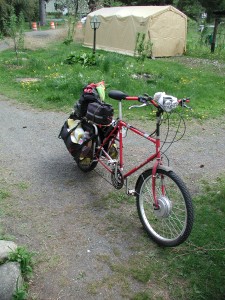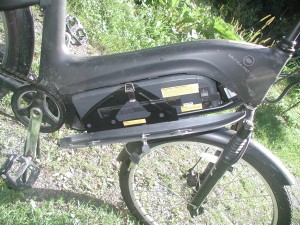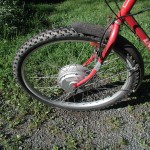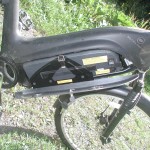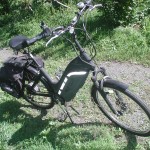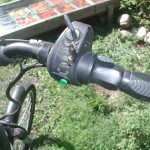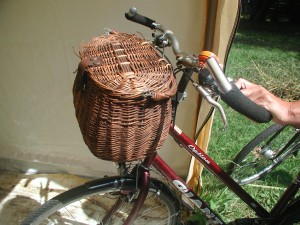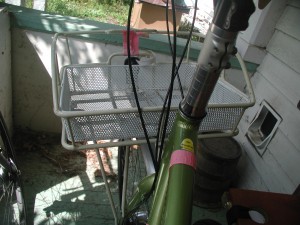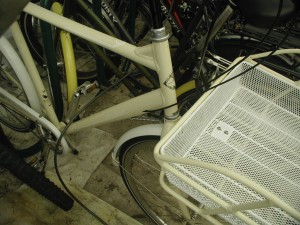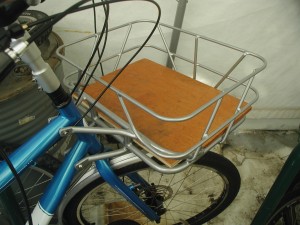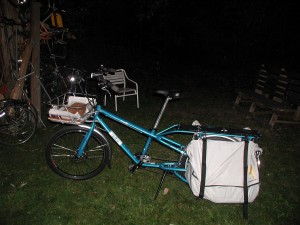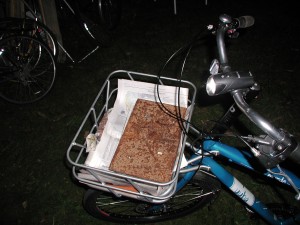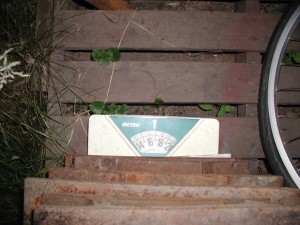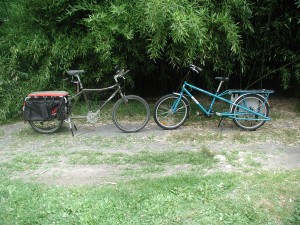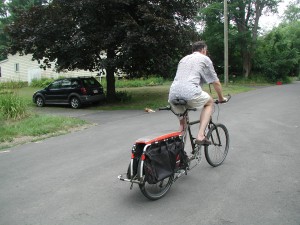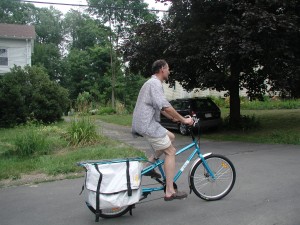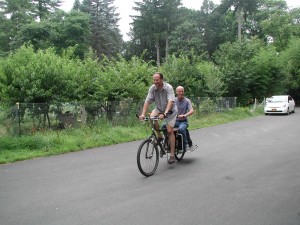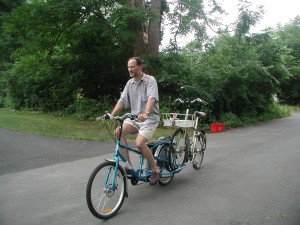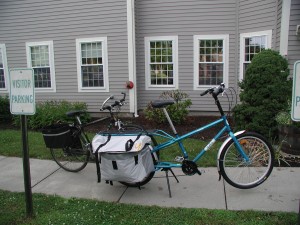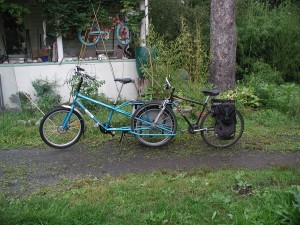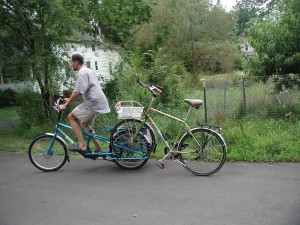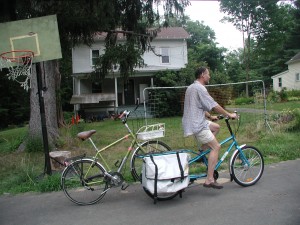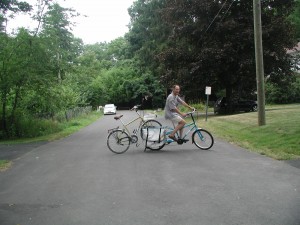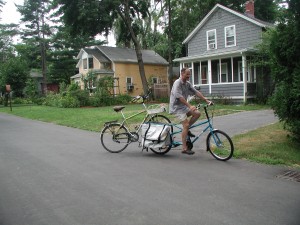Electric assists for bicycles have been around for a long time, but so far it has not been well known in the USA. I believe this is partially because of how we view bicycling. When it is almost exclusively a sport (racing or mountain biking), people consider using the help of an external power source cheating, or way too heavy an attachment when the idea is to shave every gram off bicycles. Elsewhere, where bikes are a well accepted, and used, tools of transportation, they can make life a whole lot easier.
Plus, to be honest, they can be good for the budget. While there is an up-front cost, once it is in use, a full charge that takes the bike, rider and cargo at least 15-20 miles would cost 7 cents. A lunch for a non-electric assist biker to power the workout? A hundred times this amount.
Some lingo here for the categorizing of the different kits or electric bikes:
1) The battery can be sealed lead-acid (heavy, old technology, cheap), Lithium-ion (newer technology and more expensive due to the rare-earth elements it contains). The LiFePO4 that is quite popular today is related to #2. Either way, the battery is the heaviest part of the kit by far.
2) Motor: Brushless (less maintenance, but once it has a problem it can’t usually be fixed) and with brush (older, but much simpler technology). In addition to that a motor can be on the side powering the wheel through the spinner touching the tire, or built right into one of the wheel hubs. Don’t get confused by their small sizes: a motor can be a very potent tool to convert electricity to circular motion.
3) Power and gearing ratio: most kits and built-in units are stronger than the energy a rider can put into riding. However some is geared for speed some others won’t help you go fast, but give a lot of support for pedaling uphill going slow. The Yuba company sells one of these as part of their Elmundo bicycle.
Where to acquire them?
- There are cheap department-store quality bicycles that come with an electric kit installed on them. They may be priced below $500 and they do work (at least for a while) for generic purposes in a one-size-fits-all way (they likely come with an external motor, and lead-acid battery).
- A lighter system can be ordered from rare-earth rich China for about the same price – minus the bike. Hub motor built into the front wheel is part of the kit. The LiFePO4 battery can be ordered separately. The picture on tops shows such a kit integrated into an old bike along with an XtraCycle attachment.
- There are higher-end bicycles where the whole kit is integrated into the body of the bike. In this case they can support the same ends the bike is already geared toward: light-weight system for light assist, speed (subject to local regulations), and some cargo bikes come with a system, that especially designed to help you take off and keep moving. This picture shows a battery integrated into the body of a bike. Your local bike-shop can arrange for getting one of these.
My overall opinion is, that they are a big help for cargo carrying, or when you are warming up to biking while struggling with health issues concurrently, and they are definitely a commitment. Above costing hundreds of dollars extra, they tend to make the bike heavier, and you are stuck carrying at least part of the extra weight around, want it or not.
I described my experience with electric bikes and kits here in an answer to a commenter.

